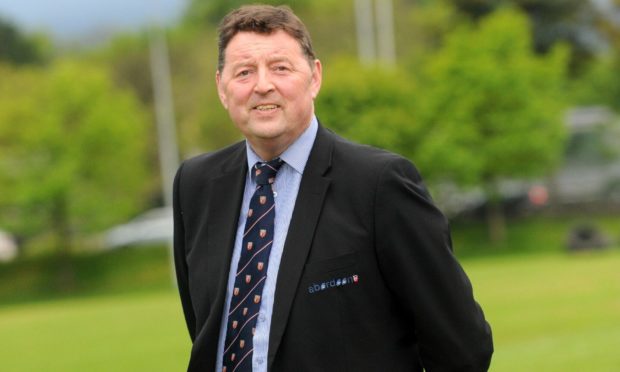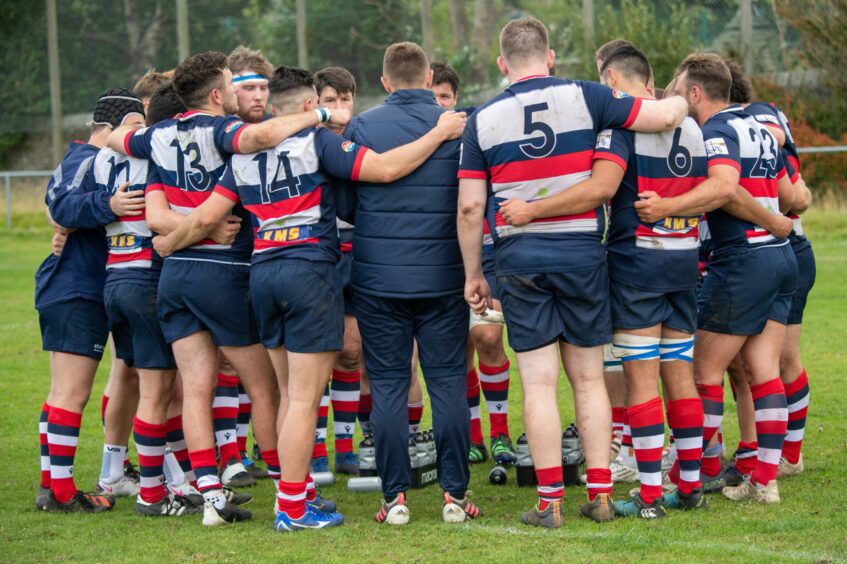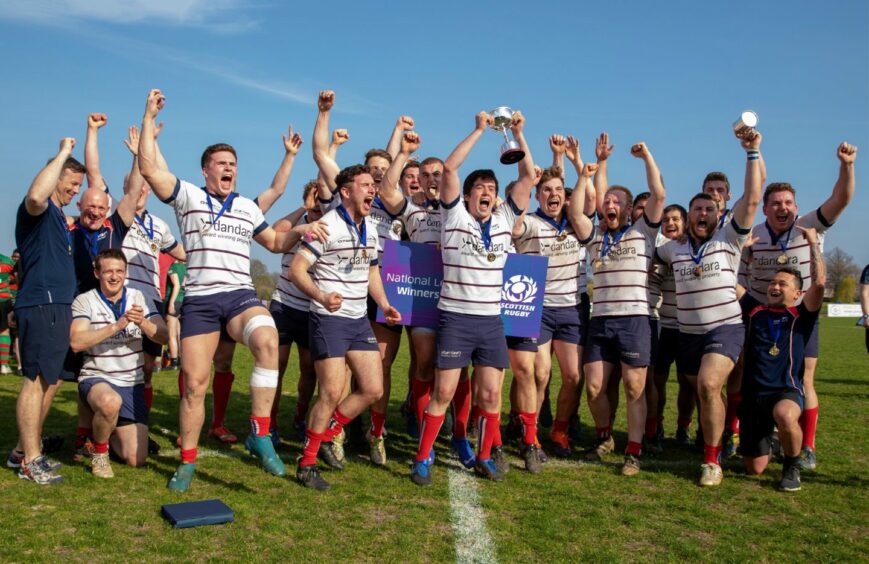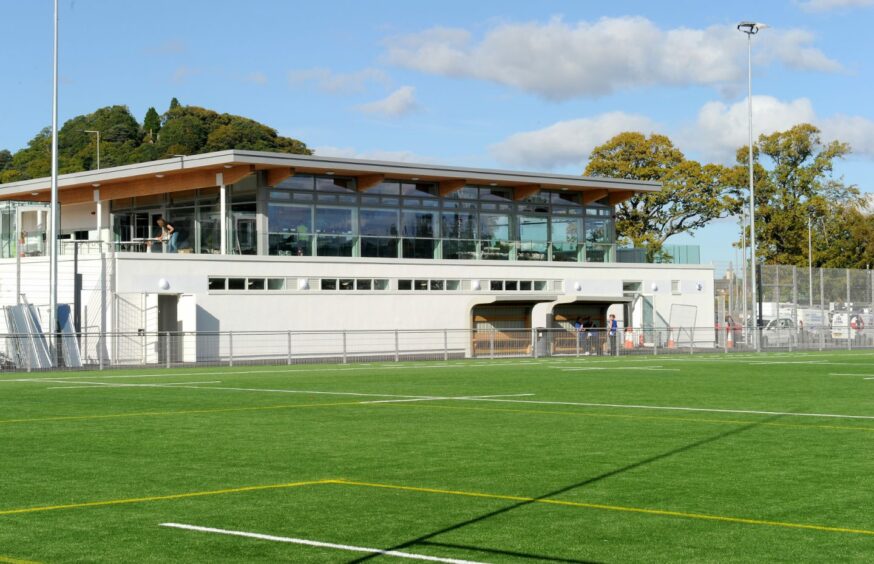A year of turmoil has prompted Aberdeen Grammar chairman Gordon Thomson to look at a different horizon.
The city’s premier rugby club, Grammar saw their Premiership status ebb away earlier in the year and have found National One no easier.
The dwindling player pool in the north-east is regularly pin-pointed as a major issue, with the depth of talent not sufficient for the significant number of clubs playing at a competitive level.
In Aberdeen city alone, you have got Grammar (National One), Gordonians (National Three), Aberdeen Wanderers, Aberdeenshire (both Caledonia One). Meanwhile, Grammar, Gordonians and Aberdeenshire also field second teams in the Caledonia leagues, while further afield, Ellon, Garioch and Mackie all compete regionally.
It means thoughts of a combined Aberdeen team have re-emerged, an idea which previously surfaced in 2017 involving Grammar and Shire. For Thomson, some form of combined effort is a necessity if Aberdeen is to host Premiership rugby once more.
“If you look around Aberdeen, there’s a huge amount of rugby clubs and not the same amount of players,” said Thomson. “If Aberdeen wishes to have a Premiership team, then it’s going to have to be in partnership (with one another).
“We all compete on a local basis and it would need buy-in from everyone to have a Premiership club. I can’t see how one club is going to do it.
“If the area wants to have a presence in the Premiership, it needs to be a collaborative approach.
“Unless we get a structure together, I can’t see us having a Premiership club in this region for some time.”
Thomson’s initial estimate, after relegation from the Premiership was confirmed in February, was that Grammar could be back in the top-tier “within a season or two”.
After seeing the challenges the club has faced, however, after dropping down a level, he does not feel anywhere near as certain.
“We need to work with what we have and the talent pool is not that deep in the area,” added Thomson. “Youngsters tend to struggle with the physicality of Borders teams, who have been round the circuit many times.
“There’s so many new young players that it’s probably going to be a year yet before they’re up to speed at this level. There’s nothing we can do about that as we don’t buy players any more.
“Everyone is doing the best they can, but we’re probably missing a couple of older heads in the team and that’s going to take time to sort.”
Looking back on a halcyon period at Grammar
During their time in the Premiership under Ali O’Connor, Grammar were able to stay up and won the National Cup in 2019.
But last year’s cavalcade of injuries and absentees, coming out of the pandemic, proved an insurmountable task.
Grammar tumbled out of the top-flight and have found themselves struggling again in National One, with just two wins to their name so far.
Thomson is realistic, appreciating the slide may not be stopped this season either.
“Everything goes in cycles,” he said. “I’ve been at the club long enough to know it goes in about seven-year cycles for us.
“We get up to the Premiership, do well for a few seasons, then go down again. It doesn’t seem to be sustainable (staying in the Premiership).
“Once you’re in there, it’s difficult to stay in if you’re not paying players.
“We finished fifth the season before Covid hit – we were the highest-placed amateur team in the country.
“I would love to stay in National One and then get back to the Premiership. But the Premiership is beyond us just now.
“National One is a difficult ask, but I would love us to stay up.
“If we’re in National Two next season, so be it. Financially, the difference is negligible from the bottom of National One to the top of National Two.
“We fully accept the position we’re in and it’s within our capabilities to turn it around.”
Looking west to Highland’s example and local authority tie-up on facilities
Having played their final game of the year against Highland, at their impressive Canal Park facility, Grammar chief Thomson sees what could be achieved when club and community buy-in.
Canal Park was redeveloped as part of the Inverness West Link project, with help from Highland Council, and the club have operated the facility in partnership with the council’s leisure partner High Life Highland since 2017.
“Looking at Highland, they have huge buy-in from High Life Highland,” said Thomson. “When you look at what is there, it does make you somewhat envious.
“We’ve got the inter-district competition coming up in May and we’re working with Highland and Dundee to put a Caledonia team together. That will be played at Canal Park, because of the facilities they’ve got there.”
Thomson has hopes of his own of what a potential redevelopment at Grammar could look like, but concedes the club need help financially to make it a reality.
“Long-term, we would like to see an all-weather pitch, a flood-lit pitch, a building that can be used for coffees and teas on a weekend, a community room and a gym,” he added.
“There is some funding in place, but we need Aberdeen City Council to buy into it – I do have meetings with councillors lined up.”
Laying the foundations for the future
With improved facilities a long-term goal, Grammar have been piling efforts into trying to find the next generation of players.
Coaching resources have been allocated towards the Aberdeen Medics side, Robert Gordon’s University and the University of Aberdeen, while community development officer Liam Buchan has also overseen increased commitment to working with local primary and secondary schools.
It will not do anything about the immediate player shortfall, but should set more solid foundations for Grammar’s future.
“We’re really pushing the boat out, trying to improve rugby,” said Thomson. “All we can do is keep working with the universities and schools and encourage people to play rugby.
“It’s five years since we stopped paying to bring in players and it’s a decision, in the long-term, which will work in our benefit.
“We’ve certainly put the work in to get the foundations right. It’s how we go about it at the top-end.
“But there’ll be a lot of short-term grief to find players that can help occupy a place in National One.”




Conversation